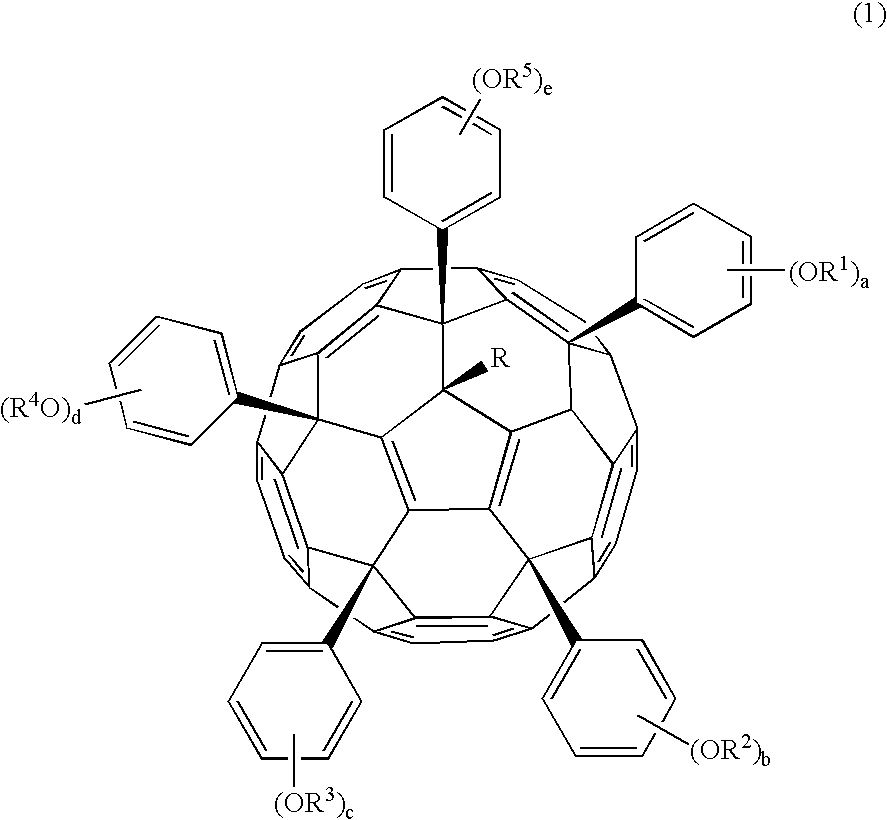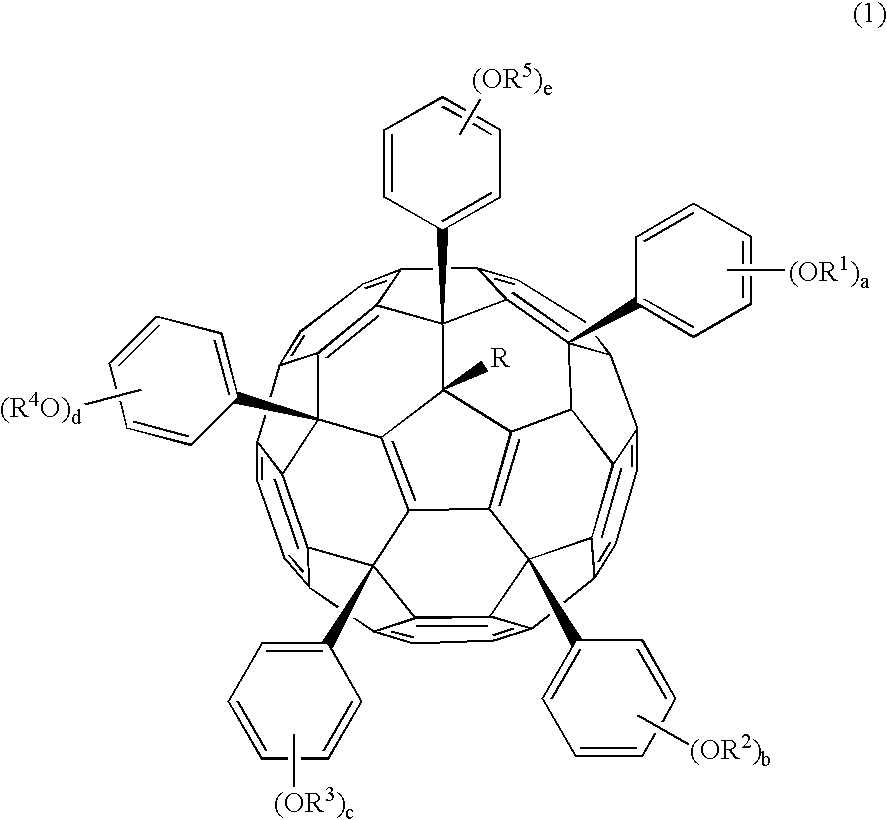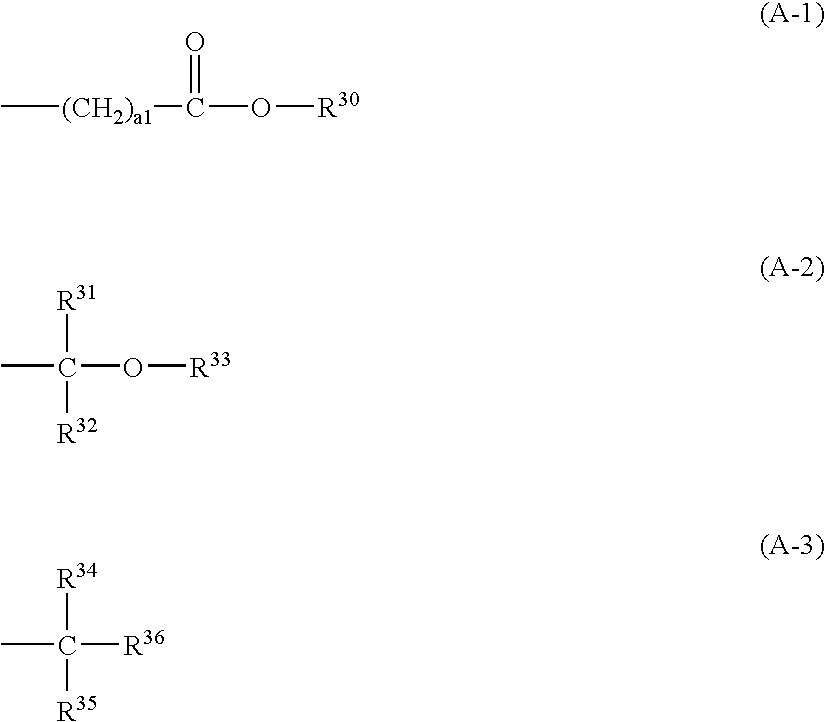Resist composition and patterning process
- Summary
- Abstract
- Description
- Claims
- Application Information
AI Technical Summary
Benefits of technology
Problems solved by technology
Method used
Image
Examples
synthesis example 1
[0506] The phenol-substituted fullerene used is nanom spectra 606Me-PhOH (Frontier Carbon Corp.) having the formula (2). This is designated Fullerene 0.
[0507] Nanom spectra 606Me-PhOH, 2 g, was dissolved in 10 ml of tetrahydrofuran, to which 0.1 g of methanesulfonic acid and 0.5 g of ethyl vinyl ether were added. Reaction was allowed to occur for one hour at room temperature and quenched by adding 0.25 g of 30% aqueous ammonia. The reaction solution was combined with 20 ml of aqueous acetic acid for crystal precipitation, followed by two times of water washing. The resulting solids were collected by filtration and dried in vacuo at 40° C., obtaining 2.2 g of solids, designated Fullerene 1.
[0508] The polymer thus obtained was characterized by 13C-NMR and 1H-NMR, finding that three of the five hydroxy groups had been substituted by ethoxyethoxy groups.
synthesis example 2
[0509] Nanom spectra 606Me-PhOH, 2 g, was dissolved in 10 ml of pyridine. With stirring, 1.6 g of di-tert-butyl dicarbonate was added to the solution at 45° C. Reaction was allowed to occur for one hour. The reaction solution was added dropwise to 20 ml of water, yielding solids. The solids were collected by filtration, dissolved in 10 ml of acetone, and added dropwise to 200 ml of water. Subsequent filtration and vacuum drying yielded 2.4 g of solids, designated Fullerene 2.
[0510] The polymer thus obtained was characterized by 13C-NMR and 1H-NMR, finding that three of the five hydroxy groups had been substituted by t-butoxycarbonyl groups.
synthesis example 3
[0511] Nanom spectra 606Me-PhOH, 2 g, was dissolved in 10 ml of pyridine. With stirring, 1.8 g of t-butyl 2-bromoacetate was added to the solution at 45° C. Reaction was allowed to occur for one hour. The reaction solution was added dropwise to 20 ml of water, yielding solids. The solids were collected by filtration, dissolved in 10 ml of acetone, and added dropwise to 200 ml of water. Subsequent filtration and vacuum drying yielded 2.5 g of solids, designated Fullerene 3.
[0512] The polymer thus obtained was characterized by 13C-NMR and 1H-NMR, finding that three of the five hydroxy groups had been substituted by t-butyl 2-bromoacetate.
PUM
 Login to View More
Login to View More Abstract
Description
Claims
Application Information
 Login to View More
Login to View More - R&D
- Intellectual Property
- Life Sciences
- Materials
- Tech Scout
- Unparalleled Data Quality
- Higher Quality Content
- 60% Fewer Hallucinations
Browse by: Latest US Patents, China's latest patents, Technical Efficacy Thesaurus, Application Domain, Technology Topic, Popular Technical Reports.
© 2025 PatSnap. All rights reserved.Legal|Privacy policy|Modern Slavery Act Transparency Statement|Sitemap|About US| Contact US: help@patsnap.com



